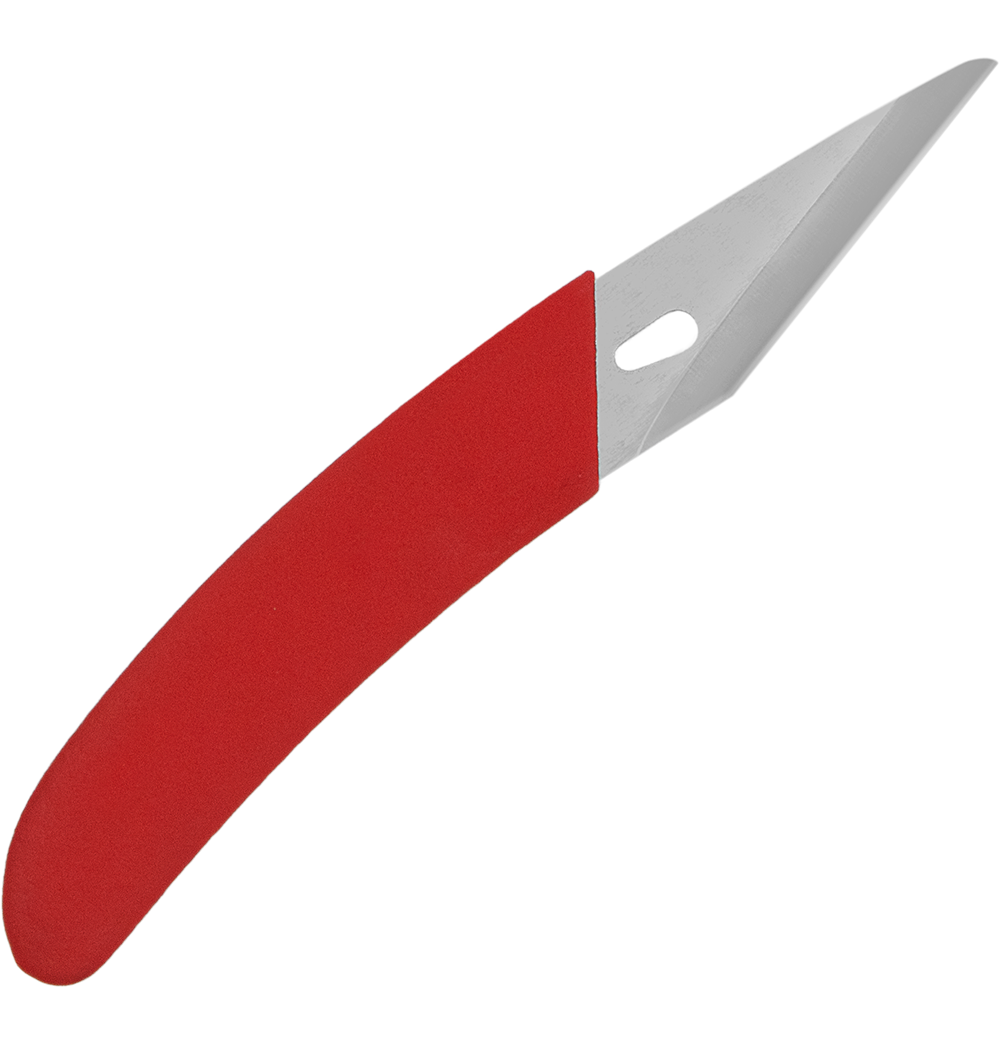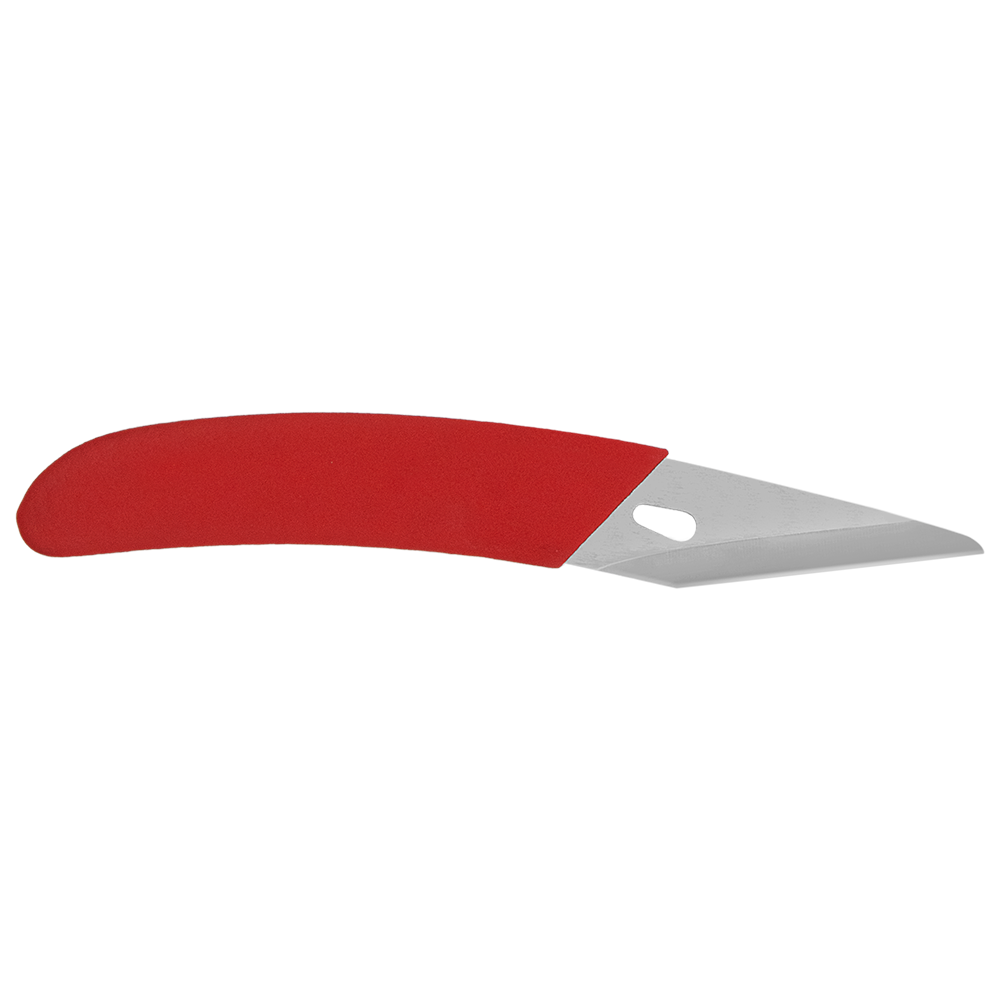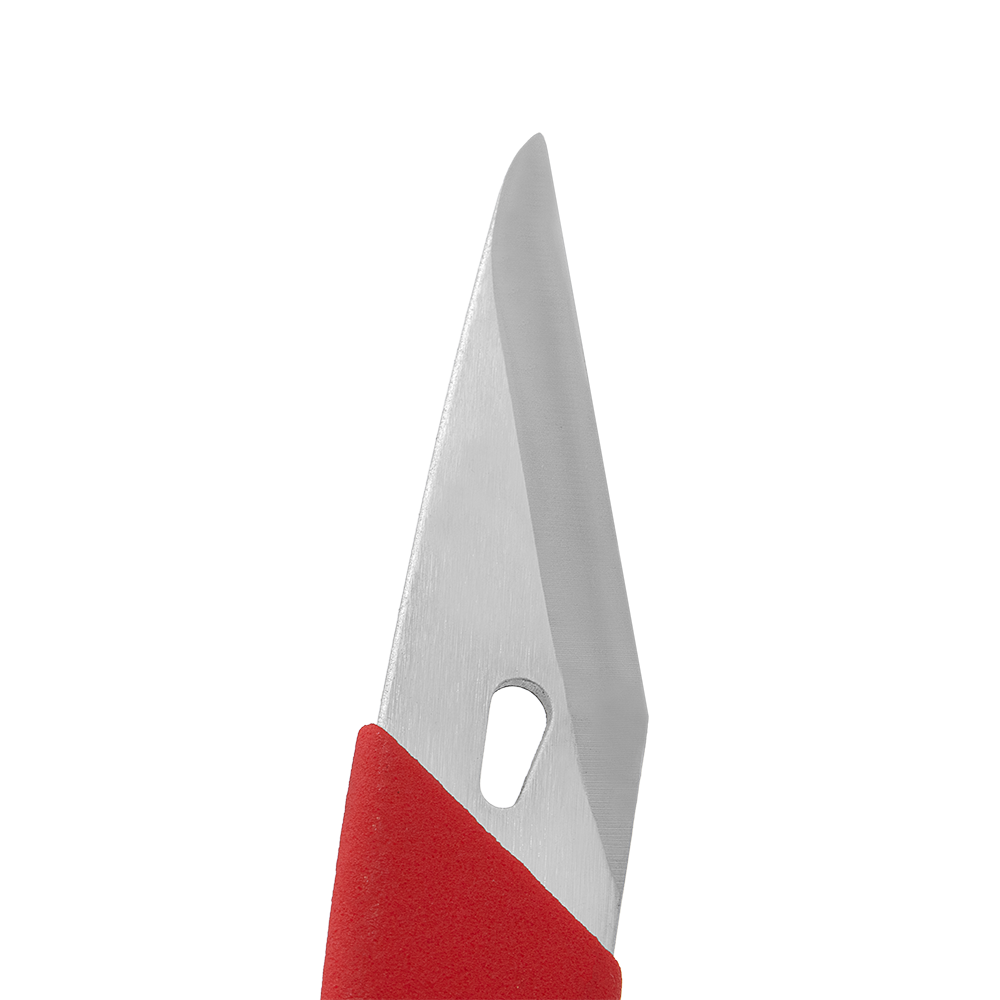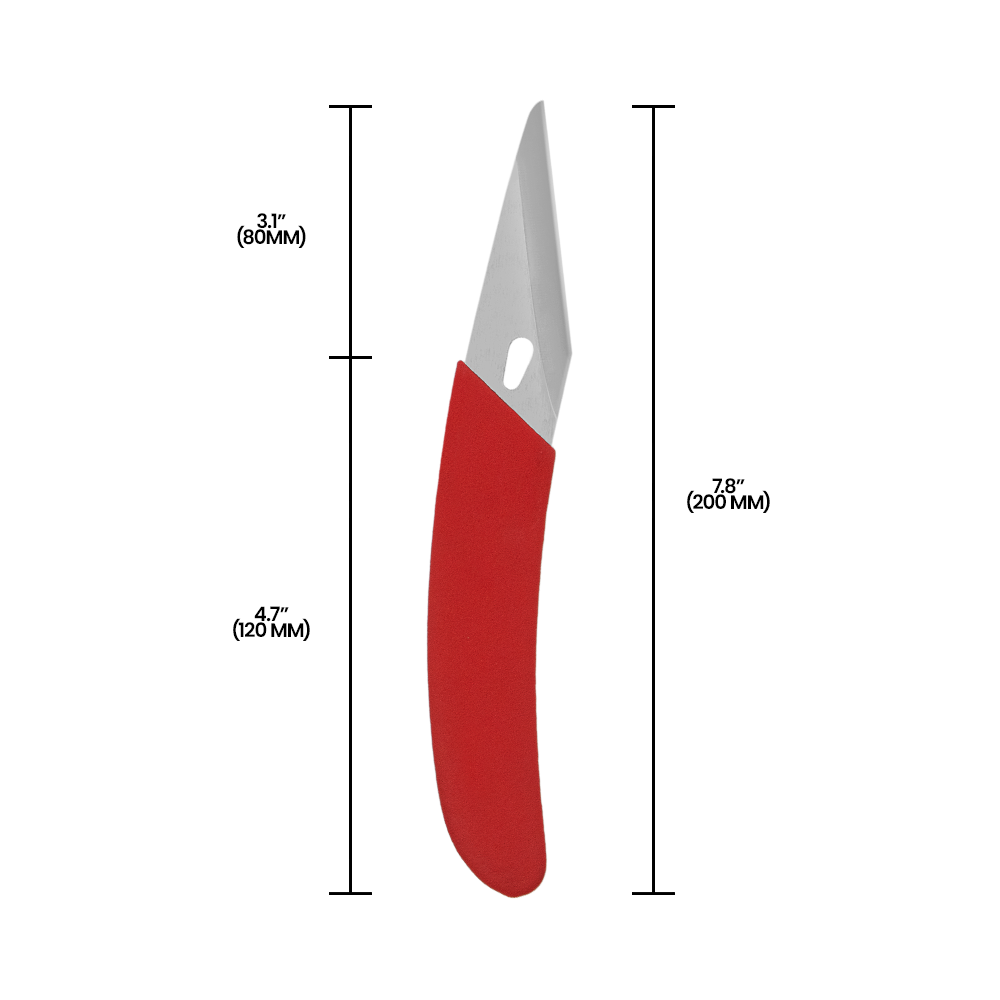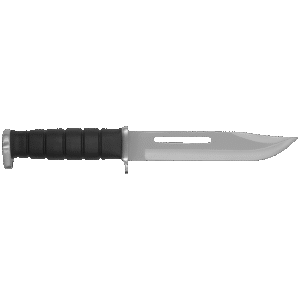Description
The Zenport Budding and Grafting Knife with Sheath (K108) is a precision tool designed to streamline your grafting and budding tasks for trees and vines. Featuring a 3.15-inch (80mm) stainless steel blade with a 2.45-inch (62mm) cutting edge, this knife is perfect for creating clean, accurate cuts essential for successful plant grafting. Its specially angled blade shape makes it ideal for grafting and budding techniques that join two plants into one healthy, thriving specimen. Whether you’re propagating fruit trees or enhancing vineyard growth, this knife is an indispensable addition to your gardening toolkit.
The knife’s 4.72-inch (120mm) bright red plastic handle is ergonomically designed to provide a secure, non-slip grip, ensuring maximum control during delicate tasks. The vibrant red color makes it easy to spot in the field, reducing the risk of losing your tool. Made from durable stainless steel, the blade resists rust and is easy to sanitize, minimizing the chance of contamination and enhancing the success rate of your grafts. A clear plastic sheath is included for safe storage and easy portability, with a convenient belt attachment to keep your knife accessible while you work.
Ideal for professional horticulturists, orchardists, and gardening enthusiasts, the Zenport K108 Budding and Grafting Knife is a reliable and versatile tool. Whether you’re grafting new trees or maintaining your vineyard, this knife ensures precision, safety, and ease of use for every task.
Why Grafting and Budding Are Beneficial
Grafting and budding are essential horticultural techniques for enhancing plant growth, improving crop quality, and conserving valuable plant species. By joining two parts of different plants, these methods allow growers to combine desirable traits such as disease resistance, hardiness, and superior fruit production into one plant. This not only boosts agricultural efficiency but also ensures healthier and more resilient plants.
Another significant advantage is the ability to propagate plants that do not grow easily from seeds or cuttings. Grafting and budding enable the multiplication of rare or difficult-to-grow varieties, preserving genetic diversity and meeting the demands of specialized markets. For example, heirloom fruit trees or unique ornamental plants can be propagated and cultivated efficiently through these techniques.
Finally, these methods are highly economical and time-saving. By grafting a fast-growing rootstock with a desirable scion or bud, growers can accelerate the growth process and reduce the time needed to produce mature, fruiting plants. This is especially beneficial in commercial agriculture, where optimizing yield and minimizing costs are critical. Grafting and budding provide the perfect balance of innovation and tradition, ensuring a sustainable future for plant cultivation.

